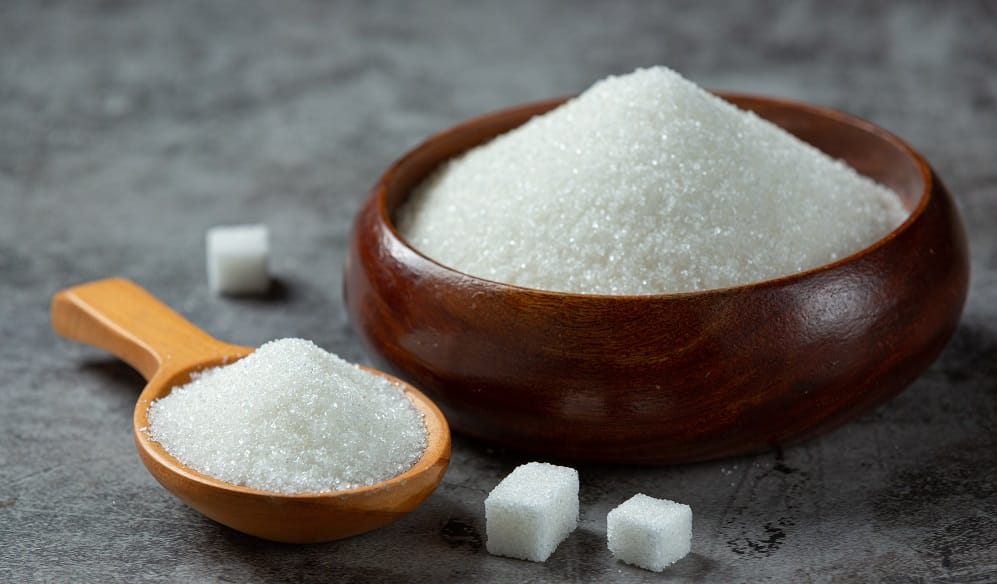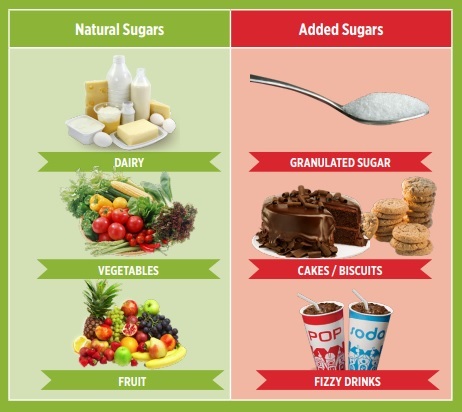Sugar smart

WHAT IS SUGAR?
Sugar has over 50 different names, from table or granulated sugar to corn syrup or fruit concentrate. Sugar occurs naturally in most foods (natural sugars) or is added by food manufacturers during processing or by people during cooking (added sugars).
When eating food, sugars are broken down into glucose which is then transported by the blood to provide energy to all the cells in our bodies.
THINK ALL SUGARS ARE THE SAME?
THINK TWICE!
Foods that have naturally occurring sugars are fruit, vegetables, starches, legumes (e.g. beans, peas, and lentils) and dairy products.
Along with sugars these foods also provide the body with the nutrients (proteins, carbohydrates, fats, vitamins and minerals) that help you stay strong and healthy and feel full for longer.
Foods high in added sugar such as sweetened soft drinks, cakes and chocolates provide the body with energy (kilojoules) but few nutrients.
As a result, you will soon feel hungry again and want to eat more.

WHY IS TOO MUCH SUGAR DANGEROUS?
- Eating too much added sugars can contribute to weight gain.
- Being overweight increases your risk of getting diabetes, high blood pressure, high
cholesterol, gout, and back and knee pain. - Brown sugar and honey contain the same amount of sugar as white sugar. Eating foods high in added sugars often become a habit that can be hard to break.
- Unlike eating foods, drinking liquids high in added sugars, like energy drinks, do not make us feel as full. The result can be a lot of extra energy that our liver stores in the form of fat.
- Eating foods high in added sugars can be really harmful as the sugar in the blood rises much faster after eating these foods.
- Too much sugar can cause tooth decay and dental cavities.

UNDERSTANDING SUGAR ON FOOD LABEL
Sugar is added to many foods and drinks in different forms: sucrose, lactose, fructose, maltose, dextrose, syrup, honey, molasses, cane juice and all fruit juice concentrates, etc.
When these words appear near the beginning of the list of ingredients, the item is likely to contain a high amount of added sugars.
The amount of TOTAL sugar per serving will give you an indication if it is high or low in sugar.


WHERE DO WE GET THE MOST SUGAR FROM?
MAXIMUM DAILY INTAKE OF ADDED SUGAR!
1 level teaspoon (tsp) of sugar = 4 grams of sugar
ADULT MEN
• 9 level teaspoons (36 g)
ADULT WOMEN
• 6 level teaspoons (24 g)
CHILDREN:
• Age 4 – 8 years: 3 level teaspoons (12 g)
• Age 8 years and older: 5 to 8 level teaspoons (20 – 32 g)

HOW MUCH SUGAR IS IN YOUR DIET?
10 TIPS TO HELP YOU EAT LESS SUGAR!
- Read the labels and choose items with the least amount of sugar.
- Slowly reduce the number of teaspoons of sugar in your tea and coffee.
- Never add sugar to a baby’s food or drink.
- Swop biscuits, sweets and cakes for fresh fruit and vegetables.
- Limit sugary treats to a small amount, between meals, once or twice a week.
- Have water on the table when eating or socialising instead of sugary, fizzy cold
drinks. - Drink water first and swap sweetened drinks for low or no-calorie options like
unsweetened tea or coffee, or make your own flavour-infused water. - Dilute your fruit juice with water (50/50).
- Eat cooked porridge or whole wheat cereals as these are lower in added sugar.
- Use cinnamon instead of sugar to flavour your food.
For a health check: visit your local clinic or doctor.
For further information email: wow@westerncape.gov.za
Website: www.westerncape.gov.za/wow Tel: 021 483 6651 | Fax: 021 483 9921

